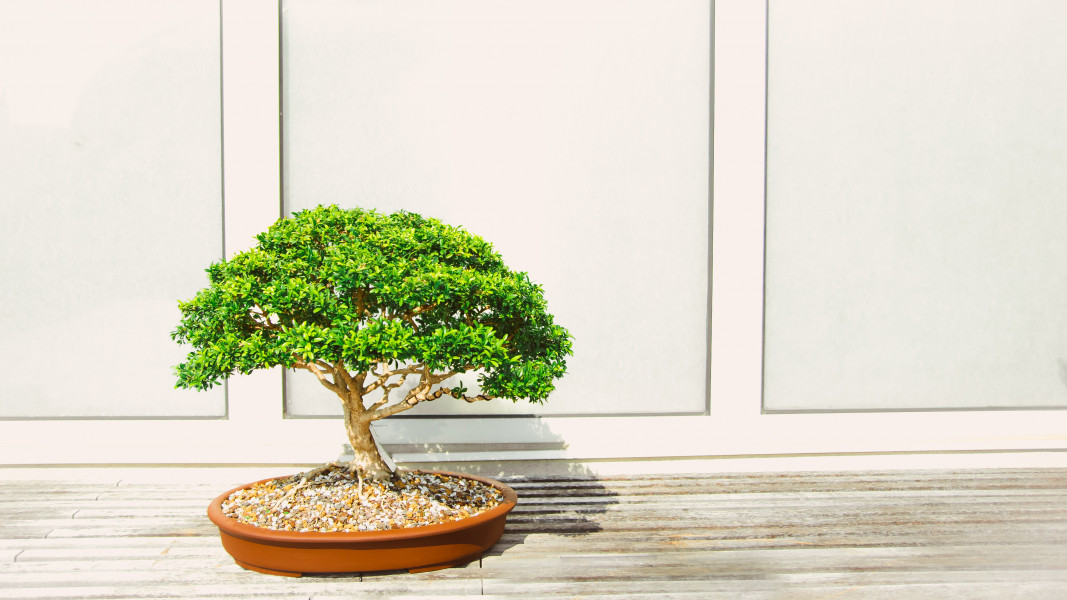What Bonsai Means?
Bonsai is basically a Japanese word, but has Chinese roots. It comes from the Chinese word “Punsai”, which literally means growing trees in pots or trays. The word bonsai can be divided into two roots, ie. “bon”, meaning ‘tray’ or shallow vessel, and “sai”, meaning ‘plant’. Thus, the plant in the tray is a bonsai.
The art of bonsai trees
The art of bonsai does not simply involve growing trees in a shallow pot. This is an artistic replica of a tree in miniature form. It is a work of art and requires expert skills and techniques. Bonsai is a way of manipulating natural wood to create a decorative "majestic" little tree. A lot of care, patience and proper technique goes into making these beautiful trees.
Bonsai trees and the evolution process
This tree has gone through a whole process of evolution. During this period, the meaning of the bonsai tree has changed with different people interpreting it in their own way. When bonsai trees were first introduced to China more than 1,300 years ago, they were seen as a symbol of elite status in society. Today, however, people around the world enjoy bonsai trees.
Depending on a person's culture or beliefs, bonsai trees are considered symbols of harmony, balance, patience and luck. Many people simply use potted trees as living decorations for interior design, while others - Zen Buddhists, for example - believe that bonsai is an object of meditation or contemplation.
Origin
The art of bonsai originated in China about 1,000 years ago. This practice began to develop in and around China, in places such as Japan, Korea, Vietnam and Thailand. At that time, people shaped and trimmed trees to look like dragons, birds, snakes and other animals associated with Chinese myths and legends. They believed that the twisted trunks of trees looked like ferocious dragons and other fearsome creatures.
The history of bonsai in China
In ancient China, early explorers were probably the first to discover miniature trees that grew high in the mountains. As early as the 4th century BC, Taoists believed that recreating aspects of nature in miniature allowed people to gain access to its magical properties. Thus was born Penjing - the creation of miniature landscapes set out in pottery.
In an attempt to recreate the natural trees they found in the mountains, the Chinese have developed pruning and binding techniques that give plants twisted shapes and old looks. Some historians believe that Taoists shaped the branches and trunks of miniature trees to resemble Chinese folklore, such as dragons and snakes. Others believe that distorted plant formations occupy yoga positions.
The first picturesque evidence of artistically decorated trees in miniature appeared in 706 in the tomb of Prince Zhang Huai. Upon entering, archaeologists found murals depicting maids carrying penjings - miniature trees and rocks.
The history of bonsai in Japan
Under the Hang Dynasty, Chinese monks migrated to Japan and other parts of Asia, taking examples of the Penza with them. Japanese Zen Buddhist monks learned the techniques needed to make miniature trees, which later became known as bonsai.
The Japanese developed their own methods of creating dwarfs, which led to different styles compared to Chinese Penza. Japanese bonsai trees were usually about a meter and a half tall and needed many years of expert care. The branches, trunks and roots get their twisted appearance by being kept in the desired shape - with the help of bamboo and wire - as the tree grows. And to achieve a certain shape, artists often transplant new branches on existing ones. Some species even bear fruit while others bloom.
By the 14th century, bonsai trees were considered a highly respected art form. Soon the prized plants made their way from the monasteries to the king's houses. Just like in China, trees are becoming symbols of status and honor.
In the early 1600s, Japanese bonsai evolved again. Skilled artists are beginning to use special pruning techniques to remove all but essential parts of plants. This creates a minimalist look that reflects Japanese philosophy and the belief that "less is more."
During the Middle Ages (1185 -1603) bonsai trees became accessible to people of all social classes. Increased demand meant that more people needed to learn the art of bonsai, and soon miniature trees were common in almost every Japanese home.
Evolution
Zen Buddhists brought this ancient Chinese art to Japan. Initially, bonsai or miniature trees and shrubs were grown by the Japanese simply to decorate their homes and gardens. It was just decorative art. This art form, refined and revered in Japan for a certain period of time. In this way, the meaning of the bonsai tree changes as people see it in many different ways. It was once considered a symbol of wealth and has become extremely popular among the upper class. It has evolved as an art form of prestige and honor.
Symbolism
Buddhist monks viewed these miniature trees as a symbol of harmony between nature, man and the soul. It was supposed to be a symbol of peace and balance in nature. The aesthetic value of these trees eventually increased and they won a place in the soul of the common man. He represented Japanese culture and tradition in one way or another.
Decoration
The 19th century was a time when this art was open to the world outside of Japan. Travelers from the west saw these beautiful miniature potted trees and were fascinated by this art form. They brought these ideas to their homeland and thus the bonsai traveled all the way west. Here again, the meaning of the bonsai tree was changed. People were amazed by this amazing creation and this art became known all over the world. Over time, however, its true significance has been lost. Nowadays, people consider it just a part of the decoration. Most Westerners see this as a small touch of Asia in their homes. It is considered a means of including natural elements in landscaping and interior decoration.

